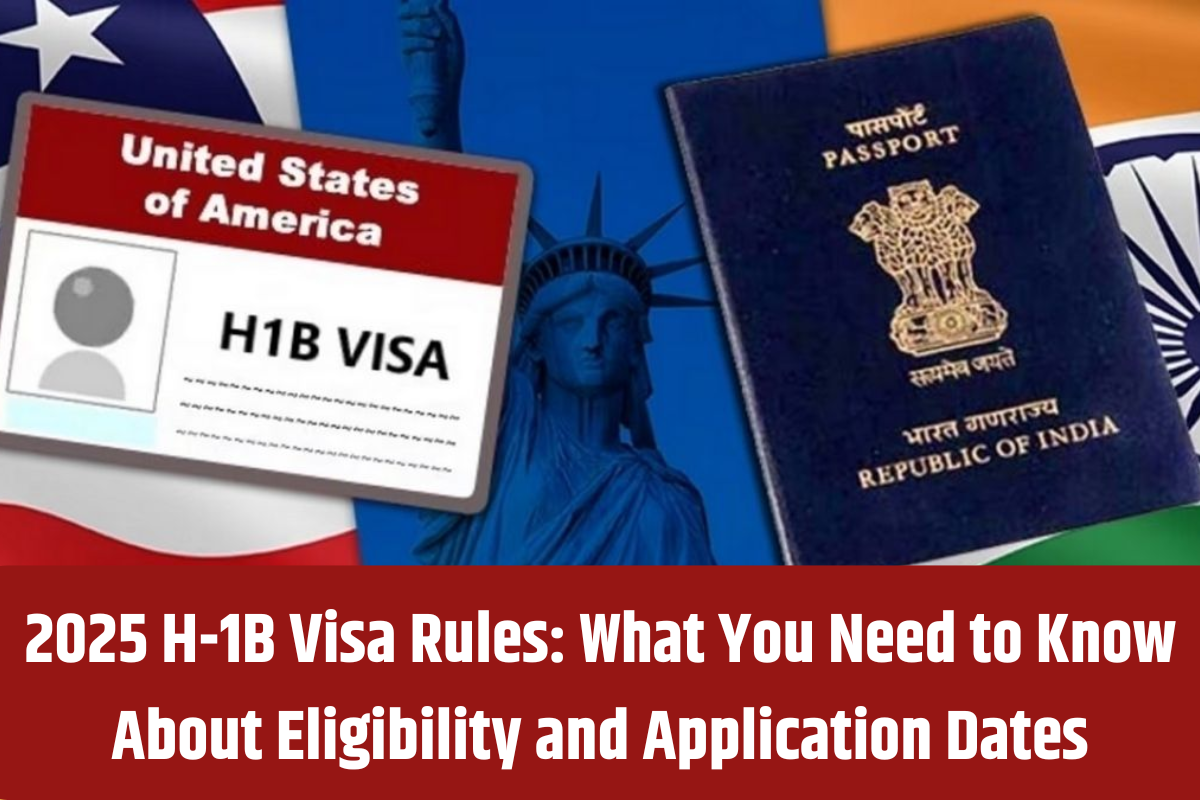The H-1B visa is a cornerstone of the U.S. immigration system, allowing American employers to hire highly skilled foreign workers for specialized occupations. As of January 17, 2025, several important changes to the H-1B visa rules will take effect. These adjustments aim to streamline the process, improve compliance, and ensure that the right professionals are filling specialized positions. If you’re planning to apply for an H-1B visa in 2025, it’s crucial to understand these new updates to avoid application delays or denials.
Key Changes in the 2025 H-1B Visa Rules
Stricter Specialty Occupation Requirements
Under the 2025 update, the definition of “specialty occupation” has been revised. Employers must now demonstrate that the position requires a degree that is directly related to the job duties. Previously, employers had more leeway in proving that a related degree could suffice. This change could significantly narrow eligibility for roles where the connection to a specific degree was not straightforward.
Expanded Cap-Exempt Employers
More institutions are now considered “cap-exempt.” This includes certain nonprofit organizations and research institutions that conduct significant research, even if it is not their primary mission. These entities can hire foreign workers without participating in the annual visa lottery, allowing for greater flexibility in staffing.
Mandatory Electronic Registration
A new online registration system will be mandatory for all employers seeking to hire H-1B candidates. This registration period occurs in March 2025, and it ensures that only those who are selected in the lottery move forward with the petition process. It simplifies the application and cuts down on unnecessary paperwork.
New Form I-129
Starting January 17, 2025, employers must use the updated Form I-129 when filing for H-1B petitions. Any applications using the previous version will be automatically rejected. This ensures consistency and alignment with the latest regulations.
USCIS Deference Policy for H-1B Extensions
USCIS is implementing a deference policy for H-1B extension requests. If the employee’s role and employer remain unchanged, USCIS will typically approve the extension without additional documentation. This provides stability for long-term H-1B visa holders and reduces the potential for delays.
Enhanced Compliance and Worksite Inspections
Employers will face increased oversight, with USCIS ramping up worksite inspections. This means employers must ensure that their job descriptions and pay structures are aligned with H-1B regulations. Be prepared for random inspections to verify that the role complies with the visa terms.
H-1B Visa Application Timeline
- Step 1: Employer Registration (March 2025) Employers must electronically register all potential candidates before submitting any petitions.
- Step 2: H-1B Lottery (If Required) If registrations exceed the visa cap, USCIS will conduct a random selection lottery.
- Step 3: Petition Filing (April-June 2025) Selected employers will file the Form I-129 and required documents.
- Step 4: USCIS Processing (June-October 2025) USCIS will review petitions and may request additional evidence to ensure compliance.
- Step 5: Approval and Visa Stamping (October 2025 Onwards) Approved applicants can begin working in the U.S. starting October 1, 2025.
Impact on Employers and Industries
- Tech Sector: Companies in the technology field may face greater scrutiny as job descriptions must align precisely with degree requirements. This could impact the approval rate for certain positions.
- Healthcare Industry: Healthcare employers, especially those linked to research, could benefit from expanded cap exemptions, providing more opportunities for foreign workers.
- Financial and Engineering Sectors: These industries must pay close attention to job descriptions to ensure that all positions clearly require a specific degree, reducing the risk of rejection.
Challenges and Concerns
- Increased Scrutiny: Employers will need to justify that a job requires a specific degree. This could make it more difficult for businesses in fields where the degree requirements are less clear.
- Potential for Higher Rejection Rates: Positions with ambiguous degree requirements—such as roles in marketing, business analysis, and other non-technical fields—may see higher rejection rates.
- Processing Delays: With heightened scrutiny and the new registration system, there could be delays in processing petitions, especially if additional evidence is requested.
How Employers and Applicants Can Prepare
- Ensure that job descriptions explicitly match the required degrees for the role.
- Double-check all petition forms and ensure they are up-to-date to avoid rejections due to errors.
- Keep documentation on file, including pay structures and worksite details, to prepare for potential audits or inspections.
Frequently Asked Questions (FAQs)
What is the biggest change in the 2025 H-1B visa update?
The most significant change is the revised specialty occupation rule, which requires that the job role directly ties to the applicant’s degree, narrowing eligibility.
Will there still be an H-1B lottery?
Yes, the H-1B lottery system will remain in place. However, it will only occur if the number of registrations exceeds the annual cap of 85,000 visas.
What happens if an employer submits the old Form I-129?
USCIS will automatically reject any petition submitted using the old Form I-129. Make sure to use the updated form starting January 17, 2025.
How can employers reduce the risk of application rejections?
Employers should ensure that job descriptions are clear, concise, and directly related to the degree required for the position. They should also ensure their petitions are accurate and timely.
Can the H-1B process be expedited?
USCIS offers premium processing for certain H-1B petitions, allowing employers to expedite the review process for an additional fee.
How the 2025 H-1B Visa Changes Benefit the U.S. Economy
The changes in the 2025 H-1B visa regulations aim to bring more skilled professionals into industries where there is a critical shortage of domestic talent. By refining eligibility criteria and enhancing compliance measures, the new rules are designed to ensure that foreign workers fill positions that truly require their specialized expertise. This will ultimately support innovation and growth in critical sectors like tech, healthcare, and engineering, driving U.S. economic success in the years to come.




